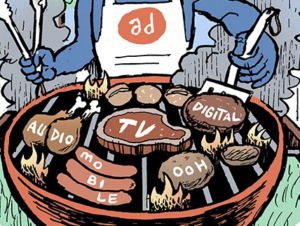“On TV And Video” is a column exploring opportunities and challenges in advanced TV and video.
Today’s column is written by Lance Neuhauser, CEO at 4C Insights.
From Comcast and NBC to AT&T and Time Warner, the unification of premium content with rich consumer data is driving our current phase of media consolidation. These companies are building the advertising platforms that will compete for the future of TV advertising as it becomes on-demand, multidevice and data-driven.
For those of us who emerged from digital and programmatic, we tend to think of it this way: How will data influence the efficiency of the TV ad buy? But if you listen to the current conversations between content producers and media buyers, you can see that the true value of the data extends much further for large-scale content producers.
The best creative minds in media are honing their skills with rich insights from massive pools of audience data, and we’re only just beginning to see the outcomes: better return on investment in content at a lower risk for the initial investment.
Big investments, little risk
Netflix Chief Content Officer Ted Sarandos this year announced that the streaming giant would spend an estimated $8 billion on content in 2018, with 85% of new spend going toward original series.
Programming investments at Amazon, Apple and Hulu tell the same tale. Overall investments are rising, and a greater portion of those investments is being funneled toward original content.
Despite the sheer enormity of their spending, these players are operating with scalpels, not chainsaws. They don’t hang their content investments on creative hunches or intuition. They back their money with cold, hard data about niche audiences and their affinities.
For example, when Netflix poured $100 million into 26 episodes of “House of Cards,” it knew the odds were in its favor even before the cameras started rolling. It knew that because its viewer data dictated a virtually failproof formula: existing UK TV series concept + political drama + Kevin Spacey + David Fincher = built-in fan base (at least at the time).
In short, these disruptors know in advance whether a piece of content has an audience and when that audience will go from watching an entire episode to an entire season to an entire series. In other words, they know whether that audience is worth the investment and exactly when they’ll get the return. Their mindset has shifted from their understanding of content to the data that helps them understand their audience, and TV networks have an opportunity to follow suit.
The next wave of data-driven content
The original content investments being made by the streaming titans dwarf the current spending of major traditional TV networks. However, the devoted and single-minded focus on TV ratings is slowly falling by the wayside as user engagement data and insights prove more useful in gauging what content is really connecting. And that’s just the beginning. Not only can data tell the tale of what’s currently resonating, but it can also help networks de-risk their content investments going forward.
If networks become more sophisticated in their use of data, they’ll ensure they’re giving audiences what they want while simultaneously reducing the risk associated with their monumental production investments. Used correctly, data can be a boon not only for audience engagement, but also for storytelling and creativity.
Some production studios are now comfortably domiciled within larger tech companies, but those network studios that aren’t face a daunting challenge. While they have access to a wide array of historical data and audience feedback regarding past wins and losses, the pressure is on for them to marry that data with a variety of third-party data sets for audience preferences. That, or they will remain the subject of acquisition rumors.
Either way you look at it, the marriage of rich data with premium content will win out in the end. The question over the next few years is what the terms of such a marriage will look like.
Follow Lance Neuhauser (@LanceNeuhauser), 4C (@4Cinsights) and AdExchanger (@adexchanger) on Twitter.














